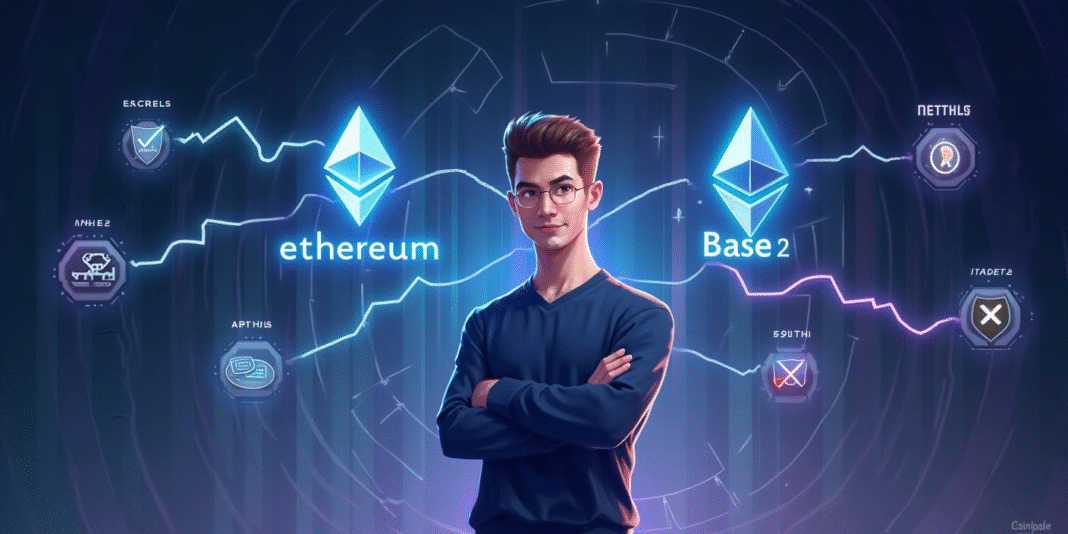Vitalik Buterin says Coinbase’s Base inherits security from Ethereum Layer-1, debunks custody myths and clears misconceptions.
Vitalik Buterin, Ethereum co-founder, has stepped in to address misconceptions surrounding Coinbase’s Layer-2 platform, Base.
As concerns about custody and centralization grow, Buterin clarified how the platform works, emphasizing its decentralized features and security. His comments aim to reassure users and developers about the platform’s safety and non-custodial nature.
Base Remains Secure Under Ethereum’s Layer-1
Vitalik Buterin addressed concerns about the security of Coinbase’s Base platform, clarifying that it relies on Ethereum’s Layer-1 (L1) for its security.
He explained that while Base may incorporate centralized elements to improve user experience, it does not compromise on decentralization. Buterin emphasized that Base does not have custody of user funds and cannot seize assets or block withdrawals.
Base is doing things the right way: an L2 on top of Ethereum, that uses its centralized features to provide stronger UX features, while still being tied into Ethereum's decentralized base layer for security.
Base does not have custody over your funds, they cannot steal funds or… https://t.co/0EMdThg4gU
— vitalik.eth (@VitalikButerin) September 22, 2025
The Ethereum co-founder stated that if the Layer-2 platform were to shut down, users would still be able to withdraw their funds directly from Ethereum, ensuring that assets are always under the control of the Ethereum network.
Buterin pointed to examples like Soneium, which show how Layer-2 platforms can prevent censorship and provide robust protection for users.
Layer-2 Platforms Are Non-Custodial
Buterin also pushed back against misconceptions about Layer-2 platforms in general. He explained that L2 platforms, like Base, are non-custodial by design. This means that they are extensions of Ethereum, not centralized servers.
The smart contract logic on Ethereum’s Layer-1 guarantees that user funds remain under Ethereum control, offering protection against theft or censorship from Layer-2 operators.
Buterin clarified that platforms such as L2beat measure real security features to ensure the safety of user funds. He noted that these platforms track “concrete properties” that protect users from risk, rather than enforcing subjective compliance rules.
This highlights the security framework in place for decentralized platforms and counters any suggestions of inherent vulnerability in the Layer-2 ecosystem.
Coinbase Legal Officer Rejects Exchange Comparisons
In addition to Buterin’s clarification, Coinbase’s Chief Legal Officer, Paul Grewal, addressed claims that Layer-2 sequencers, like those on Base, should be considered exchanges. Grewal stated that, according to U.S. SEC definitions, exchanges are platforms that match buyers and sellers of securities.
However, Layer-2 sequencers on Base do not perform these functions; rather, they process transactions and smart contract calls.
Framing sequencers on L2s like @base as exchanges misrepresents their function as a marketplace. Let's clear this up. 1/4
— paulgrewal.eth (@iampaulgrewal) September 22, 2025
Grewal further compared L2 sequencers to infrastructure providers like Amazon Web Services (AWS). He pointed out that if an exchange runs on AWS, the platform hosting the exchange is not considered an exchange itself.
Similarly, Layer-2 sequencers are an essential part of enabling secure and scalable Ethereum transactions, serving as the backbone for decentralized applications without functioning as exchanges.
By addressing these misconceptions, both Buterin and Grewal have sought to reassure users about the role of Base in the Ethereum ecosystem and the security of the platform.



